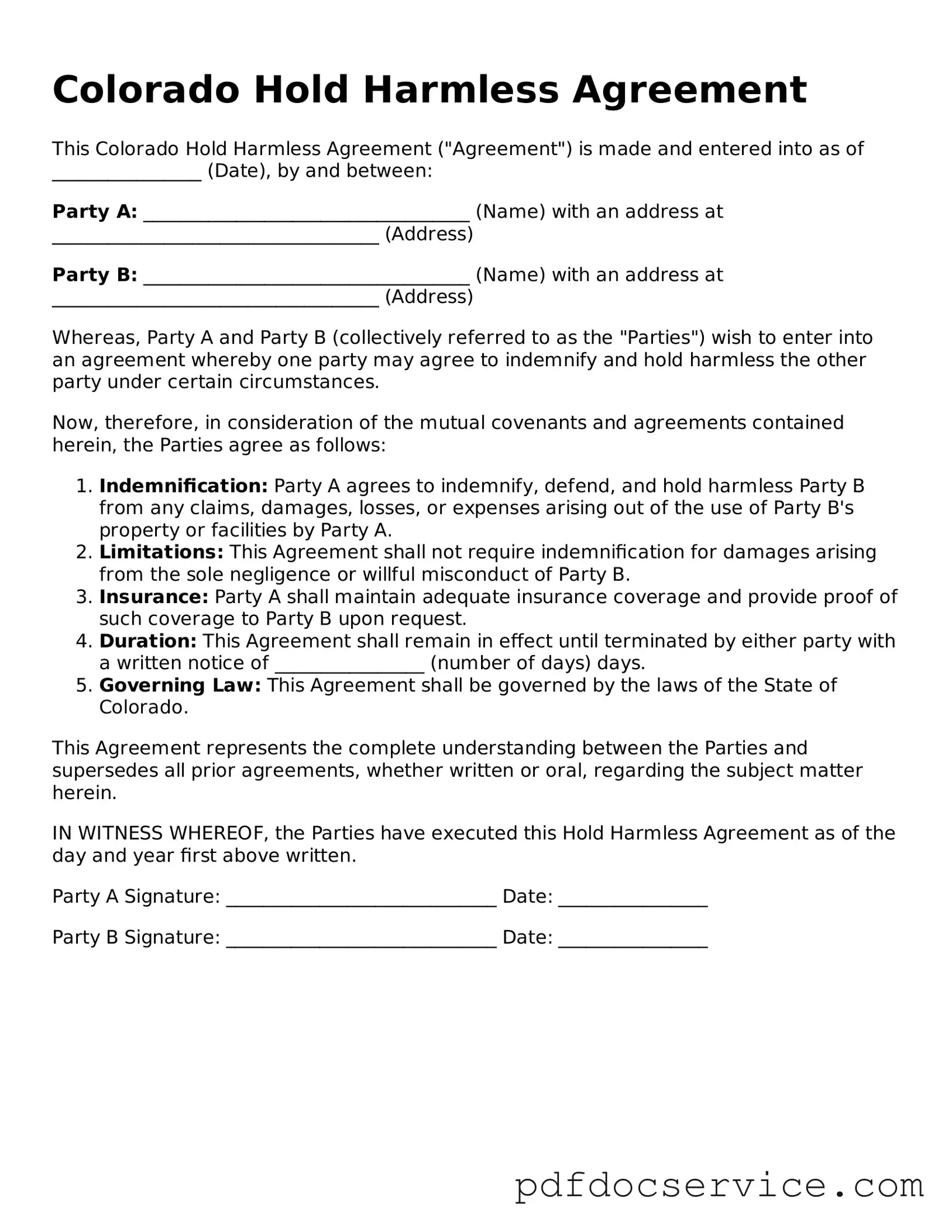Printable Hold Harmless Agreement Template for Colorado
The Colorado Hold Harmless Agreement is a legal document designed to protect one party from liability for any damages or injuries that may occur during a specific activity or event. This form outlines the responsibilities of each party involved and ensures that the individual or organization providing the service is not held responsible for unforeseen incidents. Understanding this agreement is crucial for anyone looking to engage in activities that may carry inherent risks.
Open Hold Harmless Agreement Editor
